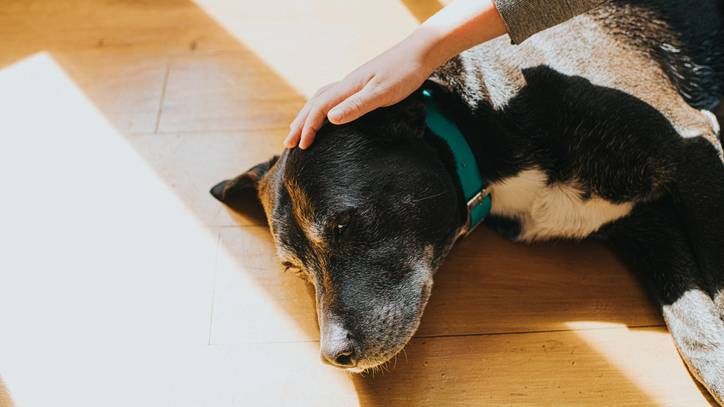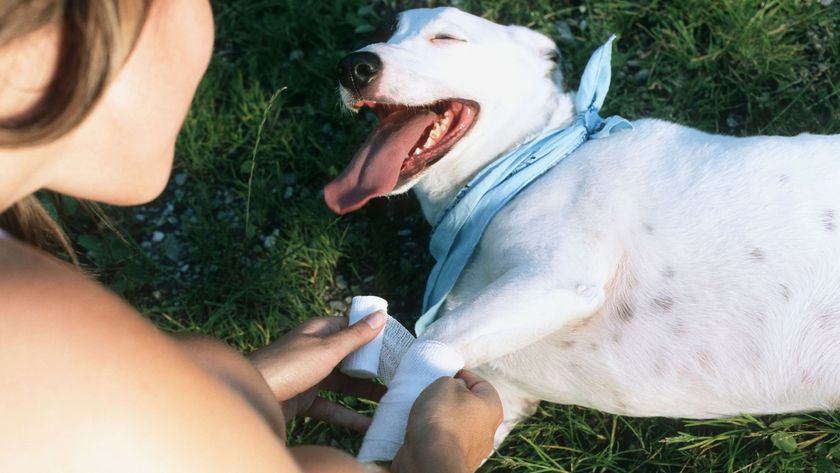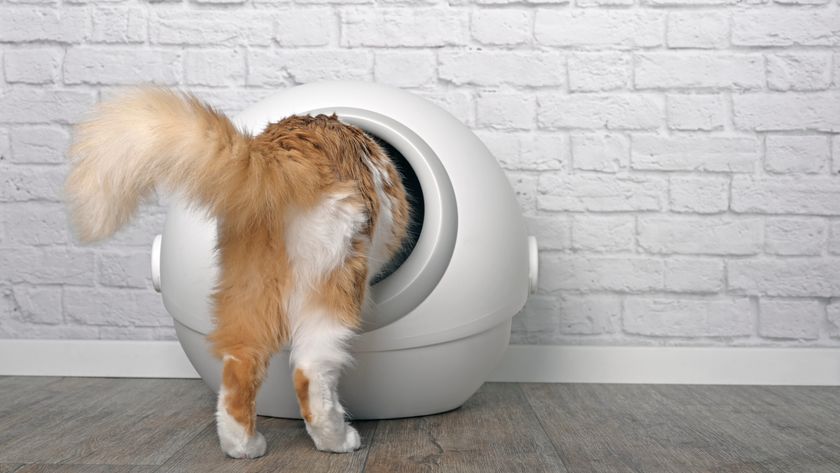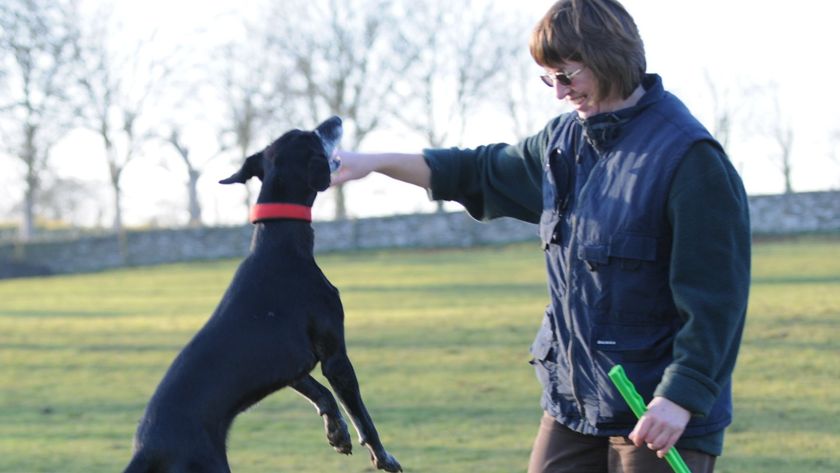Seizures in dogs: Vet's guide to causes and treatment
Seizures in dogs can be shocking and distressing to see. Let’s find out more about them

If you have witnessed seizures in dogs, you’ll know how upsetting they can be. Time seems to slow down, and a fit can seem to last an eternity. So, what causes seizures in dogs? And is there any treatment that will stop the seizures?
Whether you've noticed your dog twitching in their sleep and become concerned or worry about the onset of epilepsy in dogs, read on to find out about the different types of seizures, the different causes, treatment options and how you can keep your and your poorly pooch safe during a seizure.
Types of seizures in dogs
Just like in humans, there are different types of seizures that can affect dogs. A partial seizure, similar to a petit-mal in people, can just involve one repeated or involuntary movement, and the dog won’t lose consciousness.
On the other hand, a full or grand-mal seizure typically involves a loss of consciousness, lack of bladder and bowel control, paddling limbs and repeated tensing and relaxing of other muscles.
Identifying a seizure in dogs
So, how do you know if your dog is having a seizure? Well, it’s unlikely you’ll miss a full seizure, but if your dog has a partial seizure, they might just seem a bit vacant, twitchy, or look at something that doesn’t seem to be there.
Just like people, dogs experience a pre-ictal phase before a seizure where they might act oddly. Humans describe smelling unusual smells, seeing lights or feeling odd sensations.
The first signs of a full seizure in dogs therefore might include vacant behavior, vocalization, or restlessness.
As a pet owner, it's likely that you're highly attuned to what’s normal for your pet so any sign of abnormal activity can cause alarm. Sometimes, you might notice your dog shaking or shivering, but this can have various causes.
Similarly, if you notice that your dog twitches in their sleep, try not to panic: it's most likely a normal part of your dog’s sleep and dream cycle. You can find out more about the differences between dreaming and seizures in our vet's guide.

What dog breeds are more prone to seizures?
Different dog breeds are more prone to seizures, including Border Collies, Golden Retrievers, Beagles, Bernese Mountain Dogs, Shelties, Labrador Retrievers, Standard Poodles, and Hungarian Vizslas. However, any dog can have epilepsy, and any dog breed and develop seizures.
Causes of seizures in dogs
Seizures in dogs can be caused by issues within the brain or elsewhere in the body. Extracranial (outside of the brain) causes of seizures include certain toxins, liver disease, low blood sugar, fever and certain infections. Intracranial causes include epilepsy, brain tumours, and other structural abnormalities within the brain.
There are many tests required to determine the cause of seizures, from checking blood samples for parasites, and liver failure, to doing brain scans and taking samples of cerebrospinal fluid.
Sadly, if you’re wondering how to identify epilepsy in dogs, it’s not quite as simple as running a test. Epilepsy is a diagnosis of exclusion, meaning it can only be officially diagnosed if the other causes of seizures have been ruled out. Epilepsy is common in young dogs, especially collies, and causes sudden cluster seizures.
But, aside from epilepsy, what else causes sudden cluster seizures in dogs? The other more common causes of sudden cluster seizures include toxins and a congenital liver condition called a portosystemic shunt.
Seizure triggers
Seizures can happen for no obvious reason, but they can also be triggered by stress, loud noises, and visual stimulation.
Therefore, you might find that your dog who is prone to seizures has a fit after or during a stressful car journey, Bonfire Night or New Year celebrations.
Are seizures painful for dogs?
Seizures are very distressing to see, and they can look like your dog is in pain. However, thankfully your dog will be completely unaware of the seizure while it is going on. Once they come around, they may experience some muscle aches or stiffness related to the seizure movement.
Remember, they can also injure themselves during a seizure, especially if they fall down steps, or knock over furniture. So, make sure they’re safe then give them some space to prevent getting accidentally bitten or scratched.

What to do when a dog has a seizure
If your dog has a seizure, try to stay calm. Try to set a timer or make a note of the time so that you know when the seizure started. If you have someone else with you, try to get them to contact the vet.
In the meantime, you can clear the area of any hazards to ensure that your dog doesn’t hurt themselves. Your veterinarian will have additional advice but may ask you to bring your dog in once the seizure has finished.
Try to give them time to settle first, as the stress may trigger another seizure. Once you get them to the vet, they will be able to examine them, take a blood sample and discuss treatment options.

Dr Hannah Godfrey is a small animal vet with a love of dentistry and soft tissue surgery. She lives in Wales with her partner, son, and their two cats.
Recovery from a seizure
When people have seizures, they often take a while to come around fully and return to normal. This is known as the post-ictal phase. Dogs also experience a post-ictal phase and may take a few hours to return to normal after a seizure.
During this time, they may pace around or be very subdued, they might even seem blind or behave like they’re going to have another seizure.
Long-term effects of seizures in dogs
Every time your dog has a seizure, the abnormal nerve pathways become activated, making it more likely they’ll have seizures in the future. This creates more and more seizures, so it’s important to break the cycle.
If a dog has cluster seizures or goes into status epilepticus (failing to come around between seizures) their body temperature will increase, and they could suffer permanent brain damage.
Thankfully, anti-convulsant medication can control seizures to a manageable level, or even stop them completely, depending on the cause.
Summary
If your dog has seizures, it’s really upsetting to see. However, knowing what is happening, how to help them and when to worry will give you a sense of calm. Remember, your veterinarian is just a phone call away if you need some advice.
PetsRadar Newsletter
Get the best advice, tips and top tech for your beloved Pets
Dr Hannah Godfrey is a small animal vet who graduated from the Royal Veterinary College in 2011 and began work straight away at a busy mixed practice. Initially, she treated all species, but focussed on small animals from 2014. She has a passion for soft tissue surgery, ultrasound, and canine and feline dentistry, having completed additional training in these areas.

Vet shares 5 signs of spring allergies in dogs you need to watch out for

How far can dogs smell? And other ‘nosy’ questions answered










